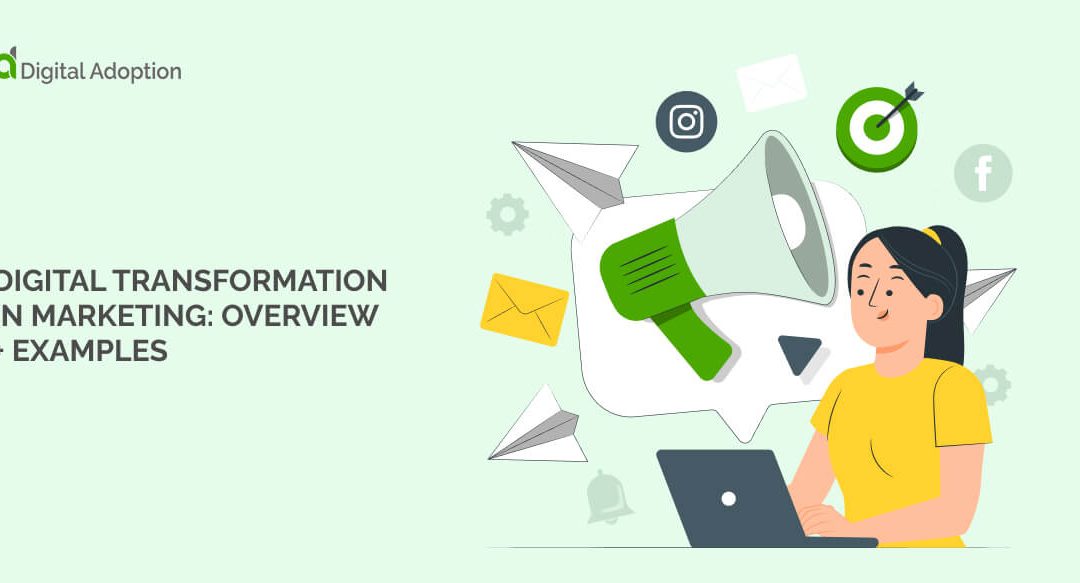Digital transformation isn’t just a buzzword—it’s the lifeline of innovation and long-term success in today’s competitive world. Businesses that embrace it are often those setting benchmarks for their industries. In this article, we’ll explore ten compelling digital transformation examples that offer practical inspiration for leaders, marketers, and technologists.
Amazon – Reinventing Retail with Automation and AI
Amazon’s digital transformation is the gold standard. Beyond eCommerce, it has redefined logistics and customer service through automation, AI, and big data. Its sophisticated recommendation engine drives over 35% of sales, while innovations like cashier-less Amazon Go stores showcase frictionless retail experiences. Cloud computing via Amazon Web Services (AWS) has also revolutionized digital infrastructure across industries.
Key Takeaway: Intelligent automation and personalized experiences are core to future-ready retail.
Netflix – From DVD Rentals to Streaming Empire
Netflix began as a mail-order DVD rental company. With the shift to digital, it disrupted cable TV by creating a user-friendly streaming platform. The real transformation came with data-driven content creation. Shows like Stranger Things were greenlit using behavioral data from millions of users.
Key Takeaway: Leveraging user data for product decisions fuels innovation and customer loyalty.
Starbucks – Enhancing Customer Experience Through Mobile
Starbucks integrated mobile ordering, payments, and rewards into a single app. With AI-driven personalization, the app recommends drinks based on past purchases, time of day, and even weather. Mobile orders now account for a significant portion of sales, illustrating the power of digital convenience.
Key Takeaway: A seamless omnichannel experience can significantly increase engagement and sales.
IKEA – Leveraging AR to Reinvent Shopping
IKEA embraced digital transformation through its IKEA Place app, allowing customers to visualize furniture in their homes using augmented reality (AR). It transformed the buying experience from imagination to real-world context, boosting customer confidence and reducing returns.
Key Takeaway: Immersive tech like AR enhances decision-making and strengthens customer trust.
Domino’s Pizza – From Food Chain to Tech Company
Domino’s turned into a tech-driven brand by investing in online ordering, voice assistants, and delivery tracking. Innovations like “Domino’s AnyWare” let users order from smartwatches, TVs, and even Slack. Their transformation led to a stock surge that outperformed giants like Apple over a decade.
Key Takeaway: Being tech-first, even in traditional industries, creates a competitive edge.
Walmart – Competing with Amazon Through Digital Expansion
To counter Amazon, Walmart revamped its digital ecosystem. It acquired eCommerce brands, developed a robust app, and introduced curbside pickup and delivery. It also uses machine learning for inventory management and personalized offers, making the shopping experience more efficient.
Key Takeaway: Legacy companies can lead digital disruption with strategic tech investments.
General Electric (GE) – Industrial IoT at Scale
GE implemented its Industrial Internet of Things (IIoT) platform, Predix, to optimize asset performance across industries. Sensors on turbines, trains, and medical devices collect data, enabling predictive maintenance and reducing downtime.
Key Takeaway: IIoT transforms operational efficiency and creates new data-driven services.
Sephora – Empowering Beauty with Digital Tools
Sephora blends AI, AR, and mobile to create an enhanced beauty experience. The Virtual Artist app lets users test products virtually. Combined with data from loyalty programs, Sephora delivers tailored recommendations across platforms.
Key Takeaway: Digital tools personalize the in-store and online journey, boosting satisfaction.
Adobe – Cloud-Based Product Reinvention
Adobe’s shift from boxed software to a cloud-based subscription model (Creative Cloud) was a major digital pivot. It unlocked continuous updates, cloud storage, and collaboration features, attracting millions of creative professionals.
Key Takeaway: Moving to a subscription SaaS model can future-proof product offerings.
Siemens – Smart Factories and Digital Twins
Siemens uses digital twins and advanced automation in manufacturing. These virtual replicas simulate real-world systems, helping companies test, optimize, and maintain complex equipment before deployment.
Key Takeaway: Simulation and AI help businesses innovate, optimize, and cut costs before scaling.
Conclusion
These ten examples underscore that digital transformation is not just about adopting technology—it’s about rethinking business models, reshaping customer experiences, and revamping operational processes. Whether you’re in retail, entertainment, manufacturing, or healthcare, the path to innovation lies in being bold, data-driven, and customer-centric.
Companies that prioritize agility, personalization, and tech integration will be those leading tomorrow’s market. Your transformation journey starts now—what step will you take next?
FAQs
1. What is digital transformation?
Digital transformation involves integrating digital technology into all business areas, fundamentally changing how you operate and deliver value to customers.
2. Why is digital transformation important for businesses?
It helps businesses stay competitive, improve customer experience, increase efficiency, and uncover new revenue streams through innovation.
3. Which technologies drive digital transformation?
Key technologies include artificial intelligence (AI), machine learning, cloud computing, Internet of Things (IoT), AR/VR, and big data analytics.
4. Can small businesses benefit from digital transformation?
Absolutely. Small businesses can leverage digital tools to automate operations, reach wider audiences, and compete effectively with larger enterprises.
5. How can a company begin its digital transformation?
Start by defining clear goals, evaluating existing processes, investing in the right technologies, training staff, and continuously measuring results for improvement.
Also read: iPhone 16 Advert: Apple’s Most Powerful Phone Yet.

